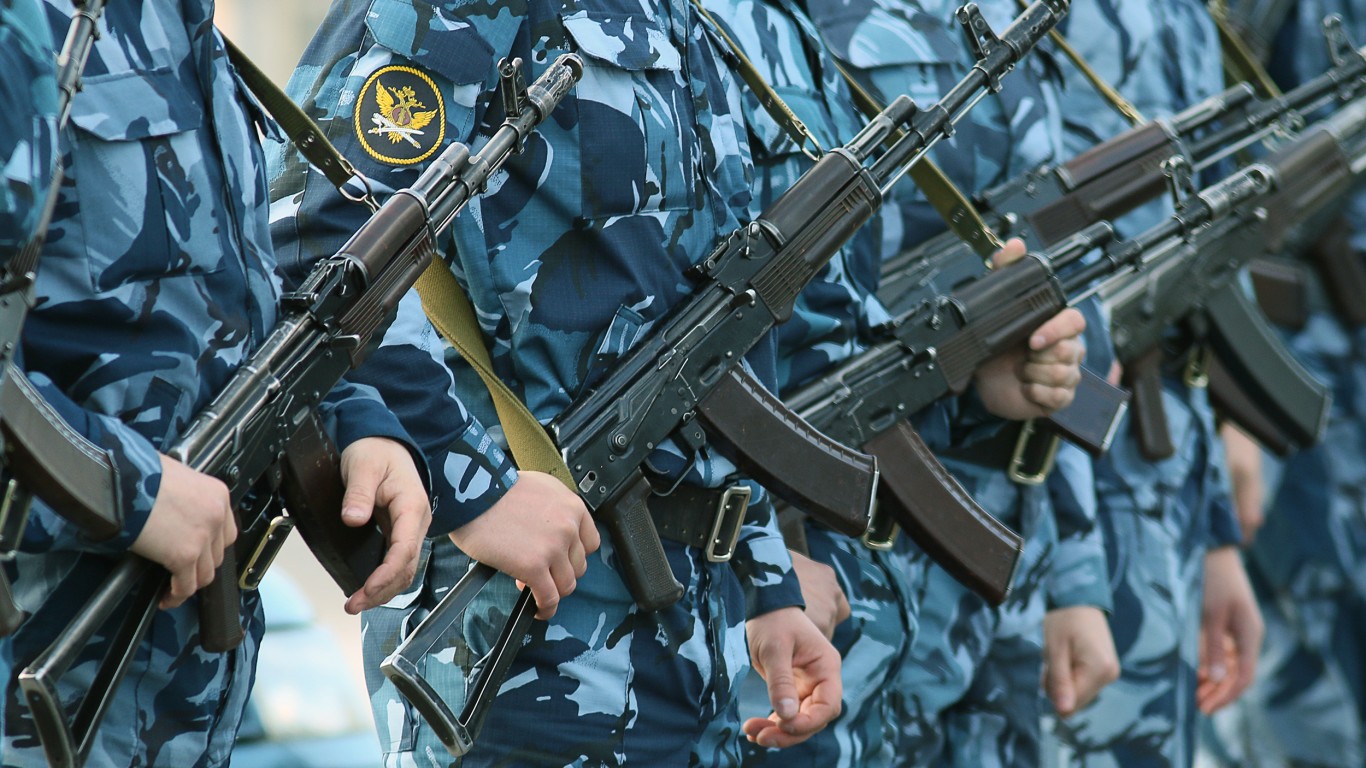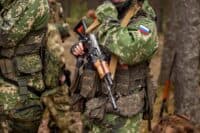
July 9-11, 2024, the 32 members of the North Atlantic Treaty Organization met in Washington D.C. to commemorate the 75th anniversary of the alliance. Far from just a ceremonial event, the summit is the first to include the newest NATO ally, Sweden. Significantly, 4 Western-oriented Pacific countries attended this Atlantic alliance meeting: Australia, New Zealand, Japan, and South Korea. This comes at a time when Russia has chosen violence in Ukraine and China is becoming increasingly belligerent near Taiwan and in the South China Sea, all while assembling a coalition of like-minded autocracies in Central Asia and Africa.
All these challenges mean the United States is reconfiguring its international defense posture, forging closer cooperation between its allies, and expanding its global military footprint. Altogether, the U.S. has 228,000 military personnel stationed on over 750 military bases worldwide. And that number is expanding. In this article, we’ll highlight some areas of the world where the U.S. military is increasing its military presence and its bases.
How and Why?

Sometimes it helps American and allied defense strategies to telegraph their deployments as a deterrent to would-be aggressors. Other times, the powers that be prefer to operate in a more clandestine and deniable way. We’ve perused the websites of the U.S. Department of Defense, the U.S. State Department, official publications of foreign governments, and authoritative news outlets such as Reuters to get a general picture of where the country is expanding its defensive footprint.
Why? Because you care about where your tax dollars are spent; whether our foreign policy is ethical and effective; and where the next war might be fought. This information might spark you to research and ask questions, lobby your elected officials in favor of, or against, some deployments, to engage in more educated discussions with friends and family, and to make more prudent international investment decisions. Plenty of Americans are retiring abroad. You might feel comfortable relocating to a place with a U.S. troop presence or want to avoid such a place as a potential war zone.
What’s an American Military Base?
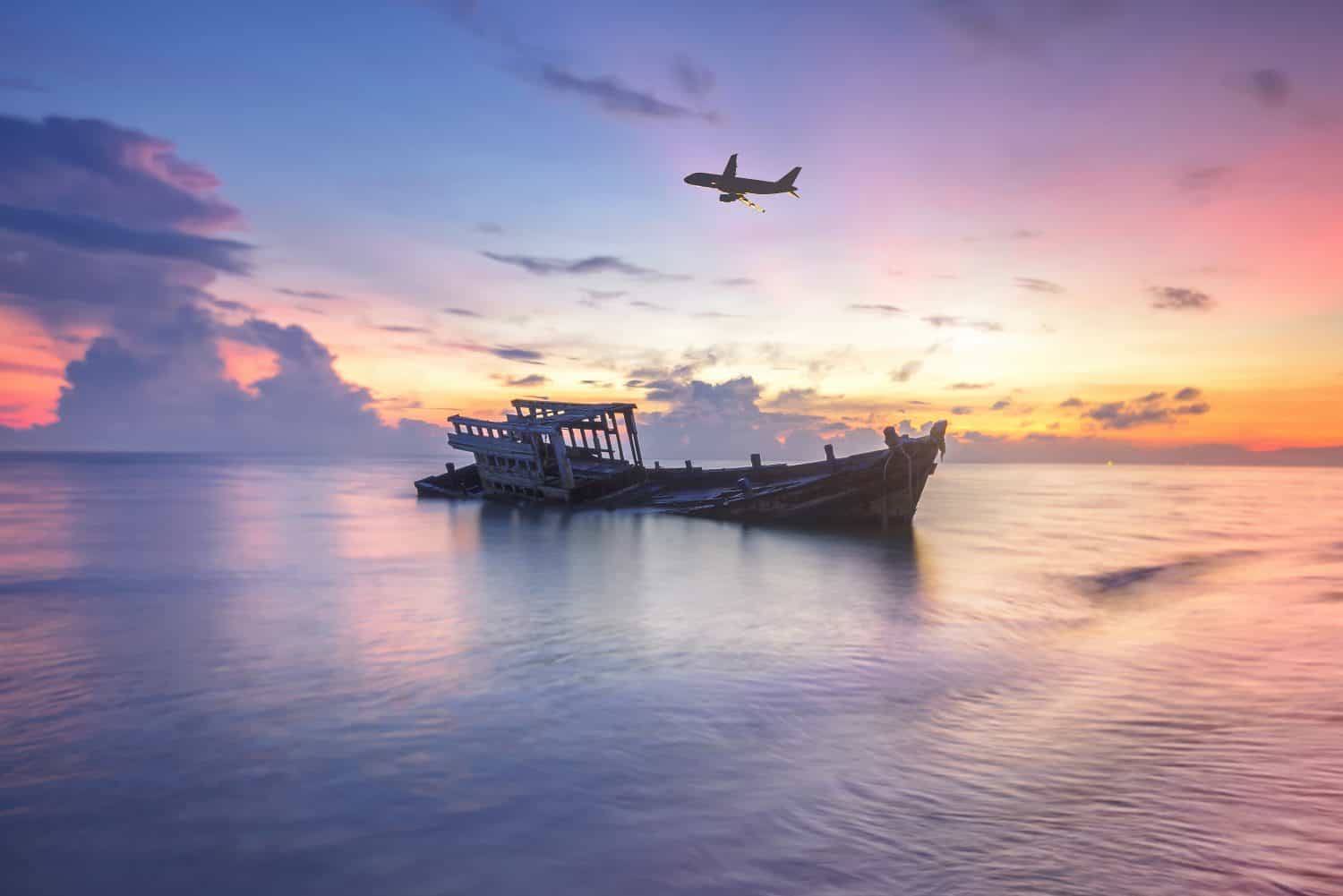
If you’re playing old-school Sim City, it’s straightforward enough when the military wants to build a base next to your city. Plunk. There it is. In the real world, it’s not so simple. U.S. bases come in different sizes, are staffed at different levels, and have different legal/ownership structures so the U.S. and its host country can spin the story of their cooperation the way they want. During the Iraq and Afghanistan wars, the Pentagon rented part of the U-Tapao Royal Thai Navy Airfield from a sub-contractor. This allowed Thailand to remain neutral in those wars, maintain good relations with China, and say there was no (official) U.S. base there (wink, wink).
What Are the Different Types of U.S. Bases?
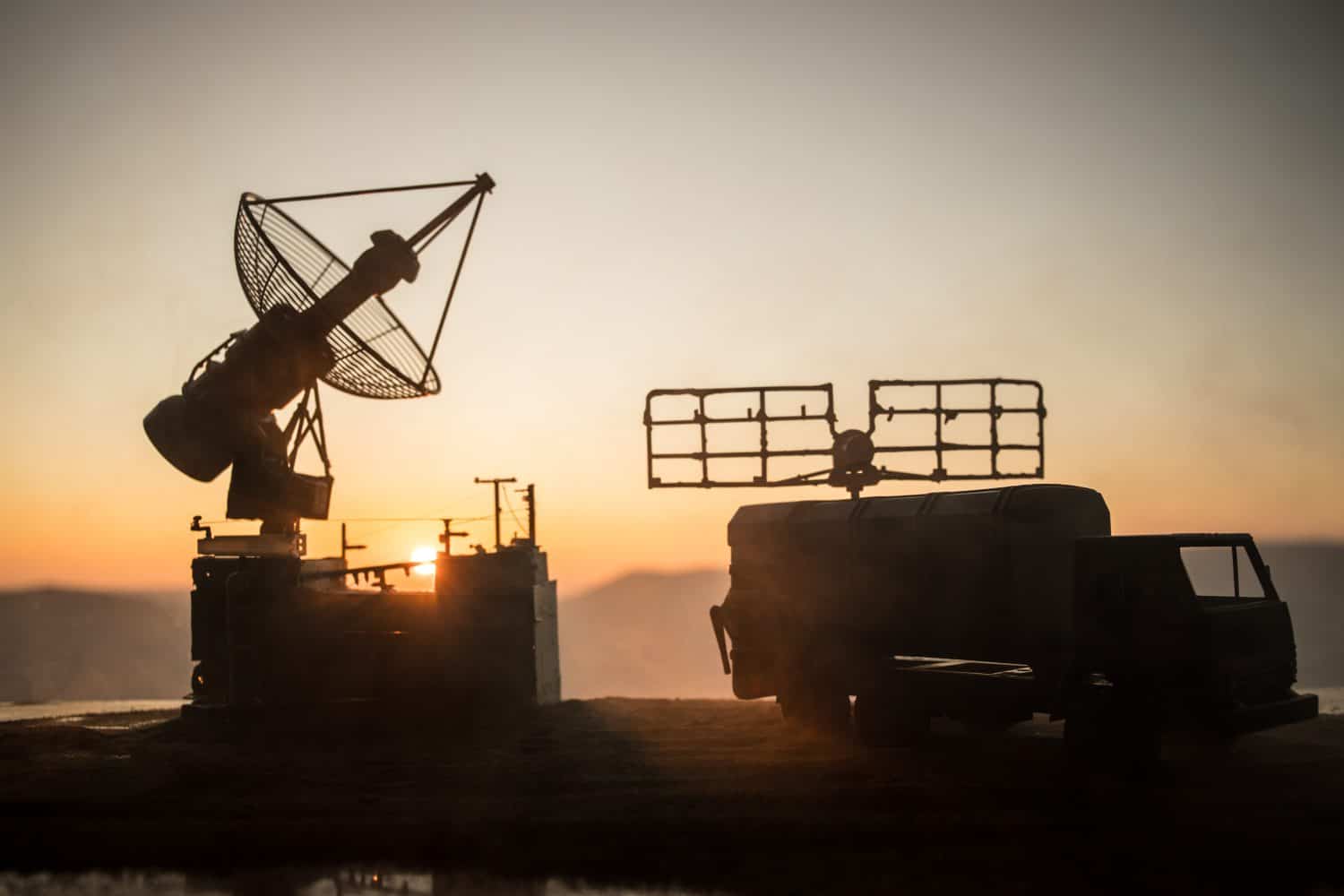
These are three types of bases the U.S. maintains abroad:
- Cooperative Security Locations (CSL) – Colloquially known as “lily pads,” these are facilities where equipment is pre-positioned in case of conflict, but they have few if any U.S. military personnel.
- Forward Operating Sites (FOS) – These bases are staffed with a small permanent force of American military personnel and/or defense contractors.
- Main Operating Bases (MOB) – These are large, heavily defended sites staffed with sizeable numbers of military personnel. Fort Liberty, North Carolina, is the largest MOB with about 52,000 troops.
Where Does the U.S. Have Defense Commitments?
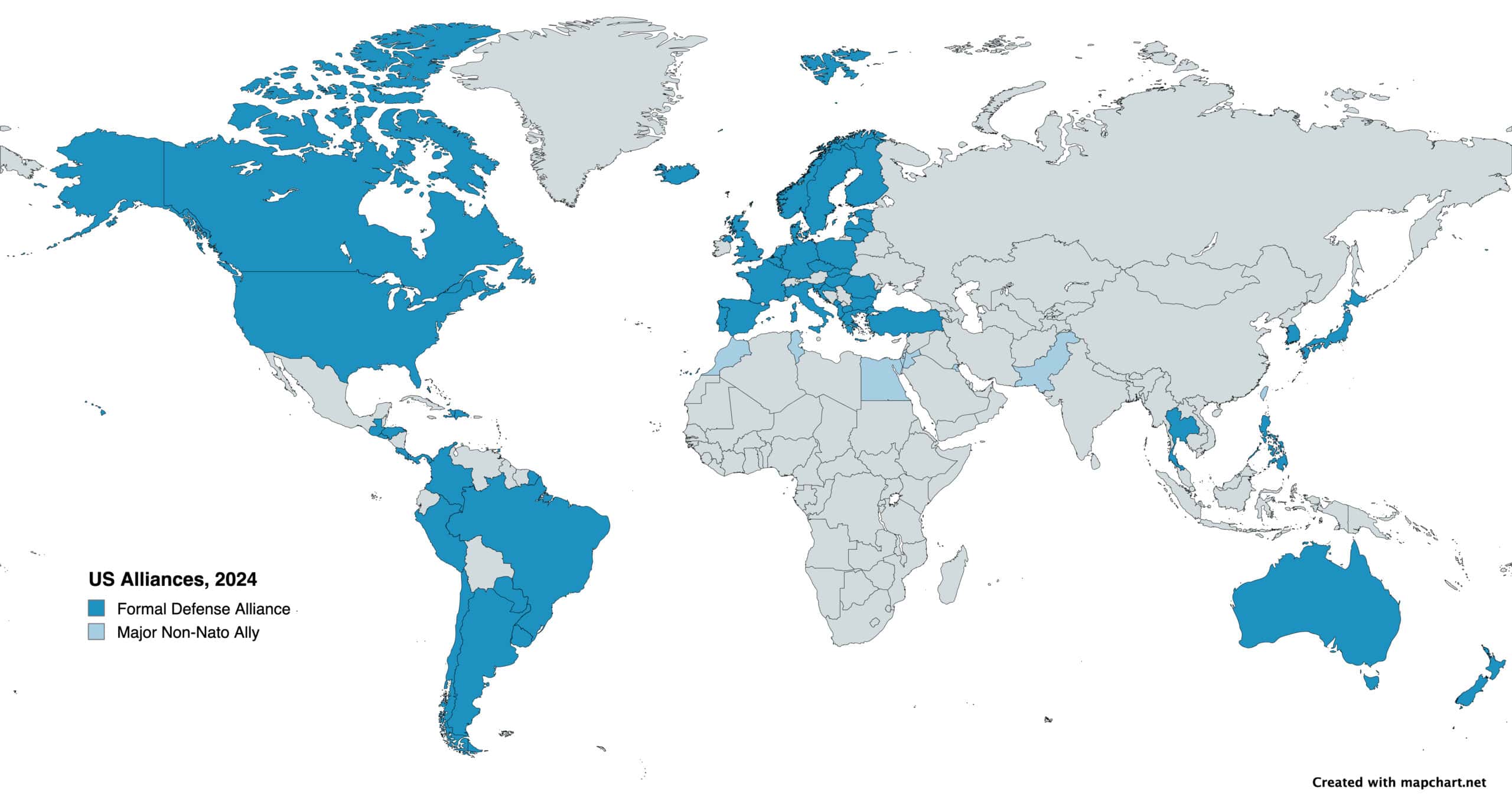
In an era before intercontinental missiles, the United States lived in splendid isolation, secluded behind two oceans that took weeks to cross. World War I and II brought the country out of that sense of security and drove home the point that allowing threats to grow overseas would become a threat to the homeland. As a result, in the post-war world, the U.S. made alliance commitments around the world, not as an act of charity but as a way of moving its East Coast defense all the way to Eastern Europe and its West Coast defense to the Pacific Rim of Asia.
What Countries Host the Most American Bases?
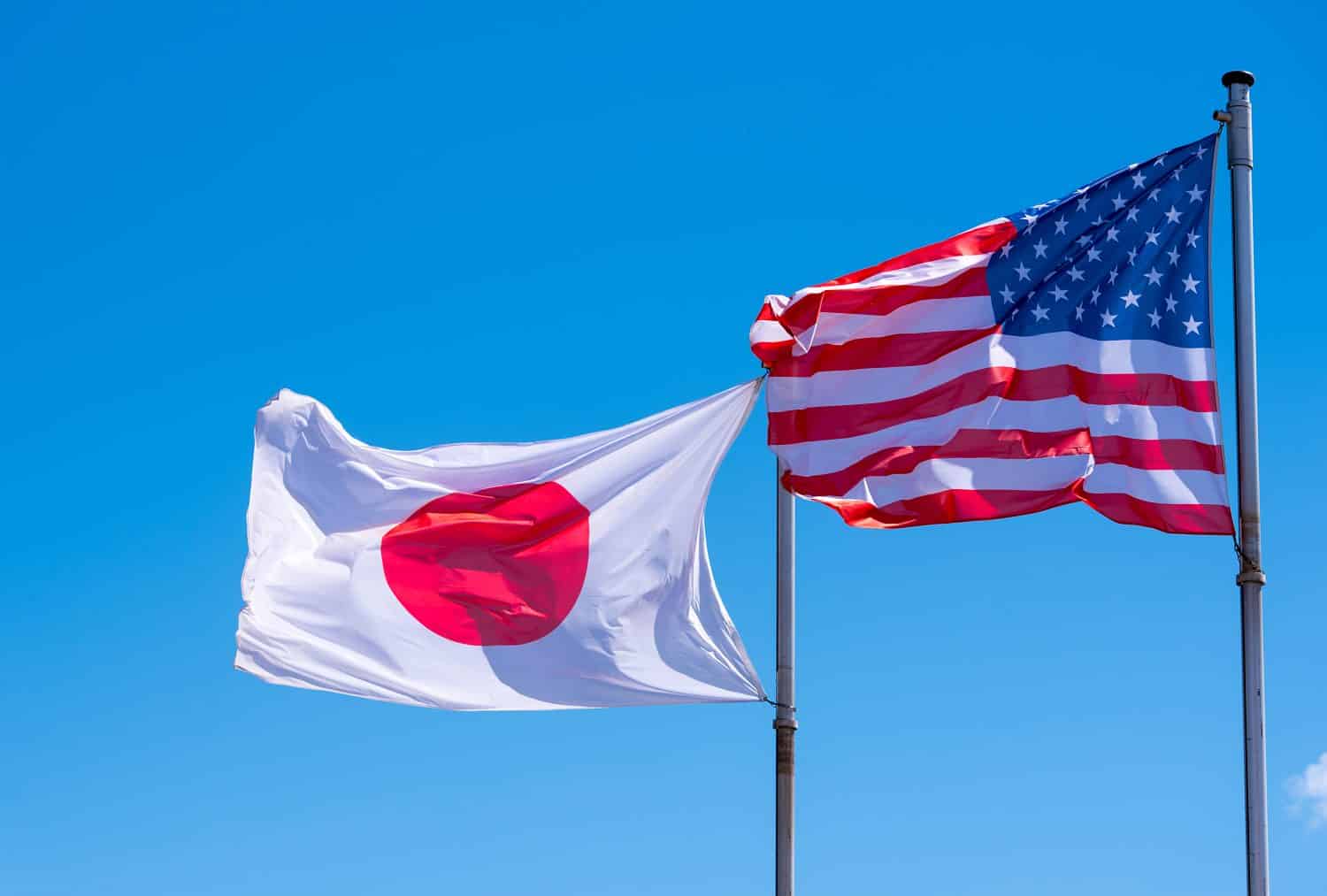
These are the countries that host the largest number of American bases, keeping in mind that some bases are pre-positioned storage sites for military equipment with relatively few personnel:
- Japan – 120
- Germany – 119
- South Korea – 73
- Italy – 44
- United Kingdom – 25
- Portugal – 21
- Turkey – 13
- Bahrain – 12
- Belgium – 11
- Panama – 11
- Marshall Islands – 11
- Kuwait – 10
- Saudi Arabia – 10
Where Is America Expanding Its Military Presence?

Surging challenges from Russia, China, North Korea, and Iran to break through the American defensive perimeter are key security concerns going into the mid-21st century. The following are examples of places where the U.S. is increasing its military bases to meet these threats.
Poland
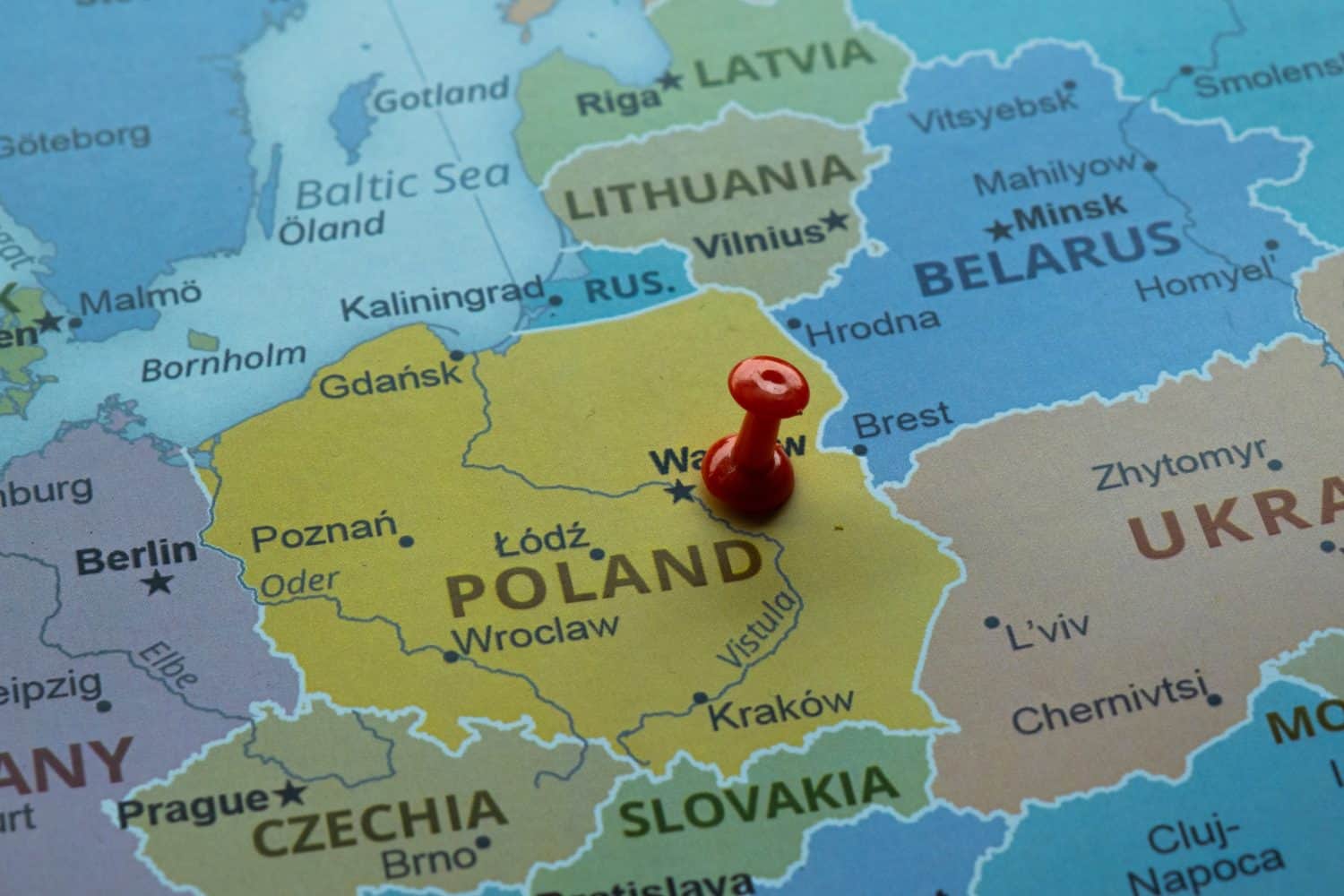
As a consequence of Russia’s invasion of Ukraine, NATO has expanded its military presence in several countries in Eastern Europe. One of the most significant is Poland, which borders Ukraine and Russian ally Belarus in the east and the detached Russian enclave of Kaliningrad to the north. One of the strategic concerns in the region is that Russia will attempt to seize a land bridge from Belarus to Kaliningrad through Poland and Lithuania (which is also a member of NATO).
The United States now leads a multinational battalion-sized battlegroup based in Poland, stationing about 10,000 American troops in the country. New U.S. bases there include the V Corps Headquarters Forward Command Post, an Army garrison headquarters, and a field support battalion.
Finland

Vladimir Putin launched his attack on Ukraine in part because of concerns that NATO was expanding too close to Russia’s borders. Ironically, however, the invasion provoked Sweden and Finland to break their neutrality and join the alliance. This doubled the alliance’s direct border with Russia and created a threat to the vulnerable road and rail connections between the Arctic port of Murmansk and St. Petersburg.
In 2023 the U.S. and Finland signed an agreement giving Washington access to 15 military installations for pre-positioning of U.S. military equipment and weapons. Finland already has a robust military but is increasing its defense spending. If tensions continue to rise, any future deployment of American troops to Finland, even if modest in size, would serve as a deterrent “tripwire” that would trigger a large American response if attacked.
Philippines
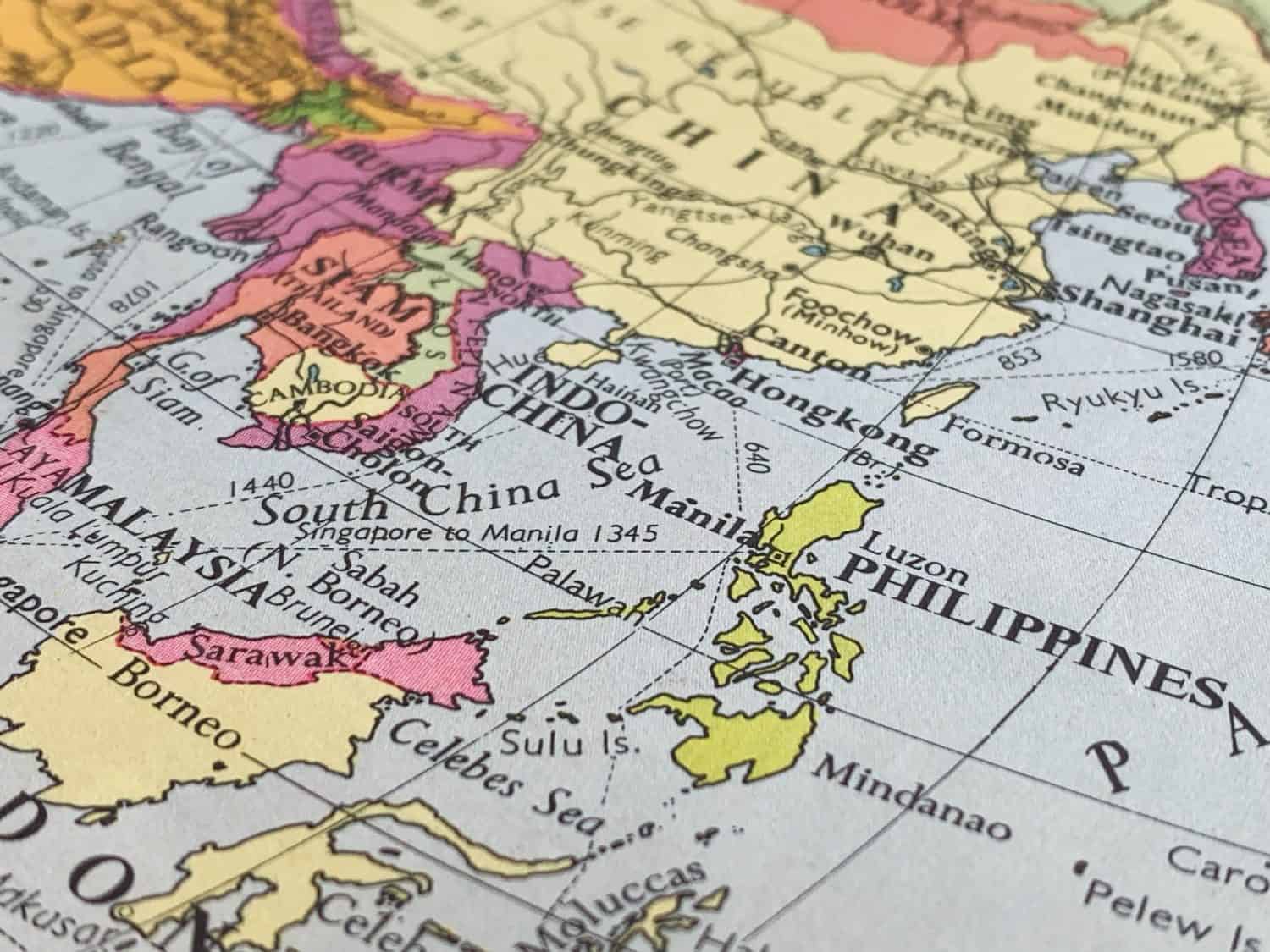
Australia
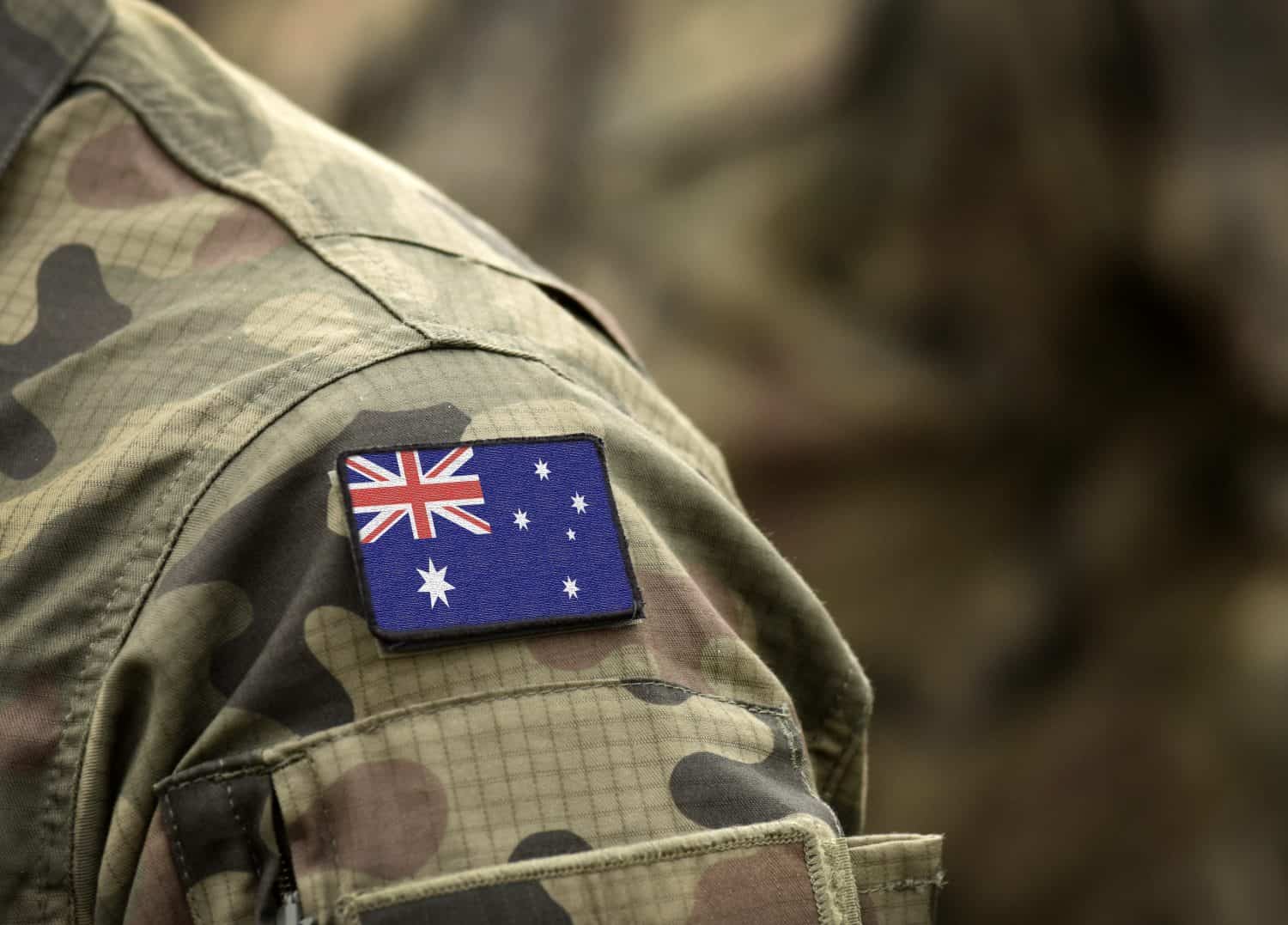
Today, the United States has made its largest military deployment in Australia since World War II. The two have signed a pact allowing Australia access to American nuclear submarine technology. In the Northern Territory, airfields in Darwin and Tindal are being expanded for joint use with the United States. Two other airfield locations are also being surveyed for expansion. U.S. defense materiel will be based in Queensland.
On the naval front, the U.S. is increasing its flights into Australia by maritime patrol aircraft, rotating U.S. Army watercraft into the region, and increasing and extending visits by U.S. nuclear-powered attack submarines to the Stirling naval base in Western Australia. Finally, a combined intelligence center is being set up in Canberra, the national capital. It all paints a picture of a more assertive American commitment to its own defense and those of its strongest allies in the Asia-Pacific region.
—-
It’s Your Money, Your Future—Own It (sponsor)
Retirement can be daunting, but it doesn’t need to be.
Imagine having an expert in your corner to help you with your financial goals. Someone to help you determine if you’re ahead, behind, or right on track. With SmartAsset, that’s not just a dream—it’s reality. This free tool connects you with pre-screened financial advisors who work in your best interests. It’s quick, it’s easy, so take the leap today and start planning smarter!
Don’t waste another minute; get started right here and help your retirement dreams become a retirement reality.
Thank you for reading! Have some feedback for us?
Contact the 24/7 Wall St. editorial team.

